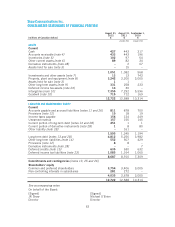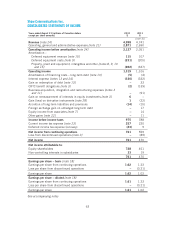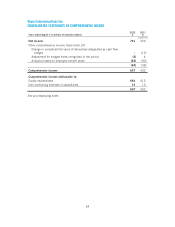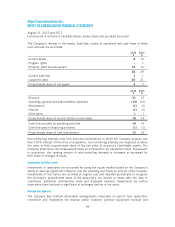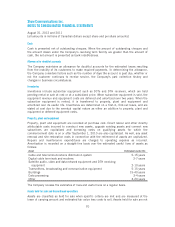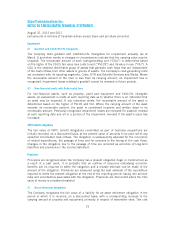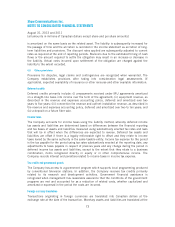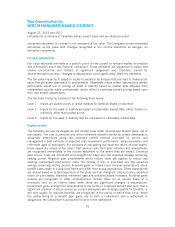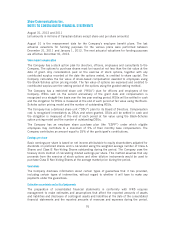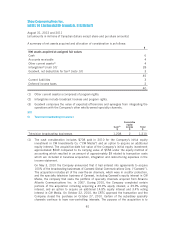Shaw 2012 Annual Report Download - page 76
Download and view the complete annual report
Please find page 76 of the 2012 Shaw annual report below. You can navigate through the pages in the report by either clicking on the pages listed below, or by using the keyword search tool below to find specific information within the annual report.Shaw Communications Inc.
NOTES TO CONSOLIDATED FINANCIAL STATEMENTS
August 31, 2012 and 2011
[all amounts in millions of Canadian dollars except share and per share amounts]
Impairment
(i) Goodwill and indefinite-life intangibles
The Company tests goodwill and indefinite-life intangibles for impairment annually (as at
March 1) and when events or changes in circumstances indicate that the carrying value may be
impaired. The recoverable amount of each cash-generating unit (“CGU”) is determined based
on the higher of the CGU’s fair value less costs to sell (“FVLCS”) and its value in use (“VIU”). A
CGU is the smallest identifiable group of assets that generate cash flows that are independent
of the cash inflows from other assets or groups of assets. The Company’s cash generating units
are consistent with its reporting segments, Cable, DTH and Satellite Services and Media. Where
the recoverable amount of the CGU is less than its carrying amount, an impairment loss is
recognized. Impairment losses relating to goodwill cannot be reversed in future periods.
(ii) Non-financial assets with finite useful lives
For non-financial assets, such as property, plant and equipment and finite-life intangible
assets, an assessment is made at each reporting date as to whether there is an indication that
an asset may be impaired. If any indication exists, the recoverable amount of the asset is
determined based on the higher of FVLCS and VIU. Where the carrying amount of the asset
exceeds its recoverable amount, the asset is considered impaired and written down to its
recoverable amount. Previously recognized impairment losses are reviewed for possible reversal
at each reporting date and all or a portion of the impairment reversed if the asset’s value has
increased.
CRTC benefit obligations
The fair value of CRTC benefit obligations committed as part of business acquisitions are
initially recorded, on a discounted basis, at the present value of amounts to be paid net of any
expected incremental cash inflows. The obligation is subsequently adjusted for the incurrence
of related expenditures, the passage of time and for revisions to the timing of the cash flows.
Changes in the obligation due to the passage of time are recorded as accretion of long-term
liabilities and provisions in the income statement.
Provisions
Provisions are recognized when the Company has a present obligation (legal or constructive) as
a result of a past event, it is probable that an outflow of resources embodying economic
benefits will be required to settle the obligation and a reliable estimate can be made of the
amount of the obligation. Provisions are measured using the best estimate of the expenditure
required to settle the present obligation at the end of the reporting period, taking into account
risks and uncertainties associated with the obligation. Provisions are discounted where the time
value of money is considered material.
(i) Asset retirement obligations
The Company recognizes the fair value of a liability for an asset retirement obligation in the
period in which it is incurred, on a discounted basis, with a corresponding increase to the
carrying amount of property and equipment, primarily in respect of transmitter sites. This cost
72


